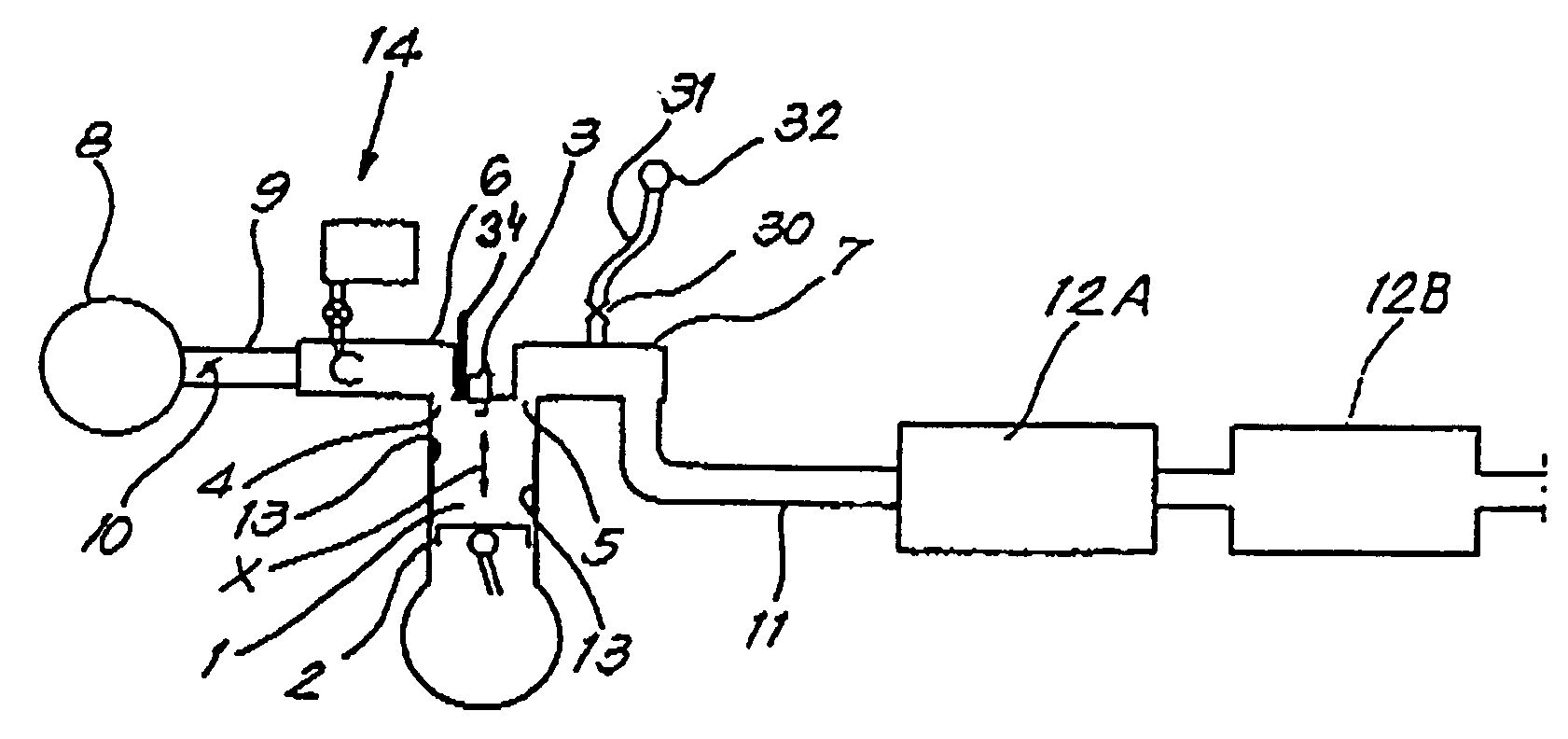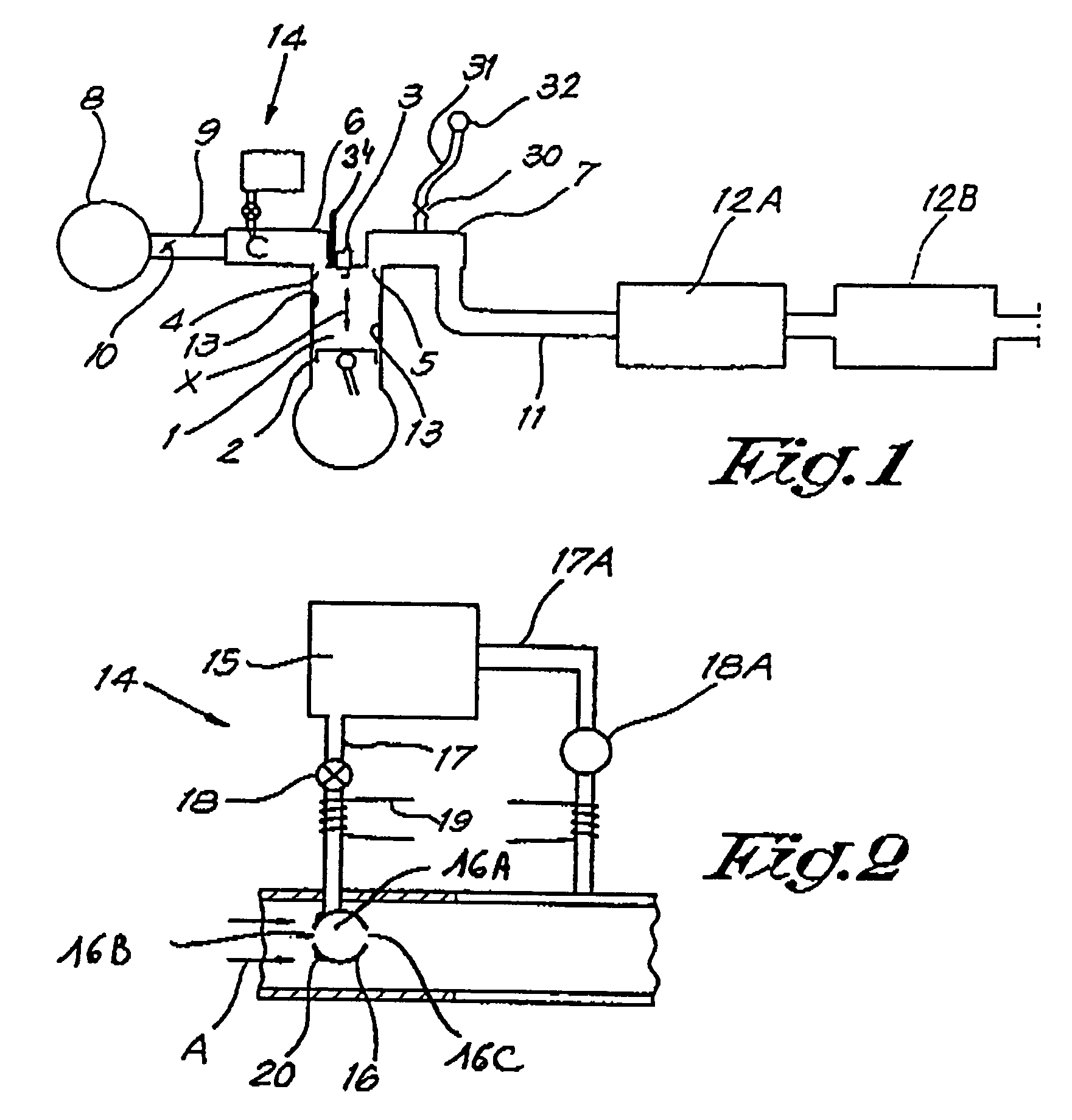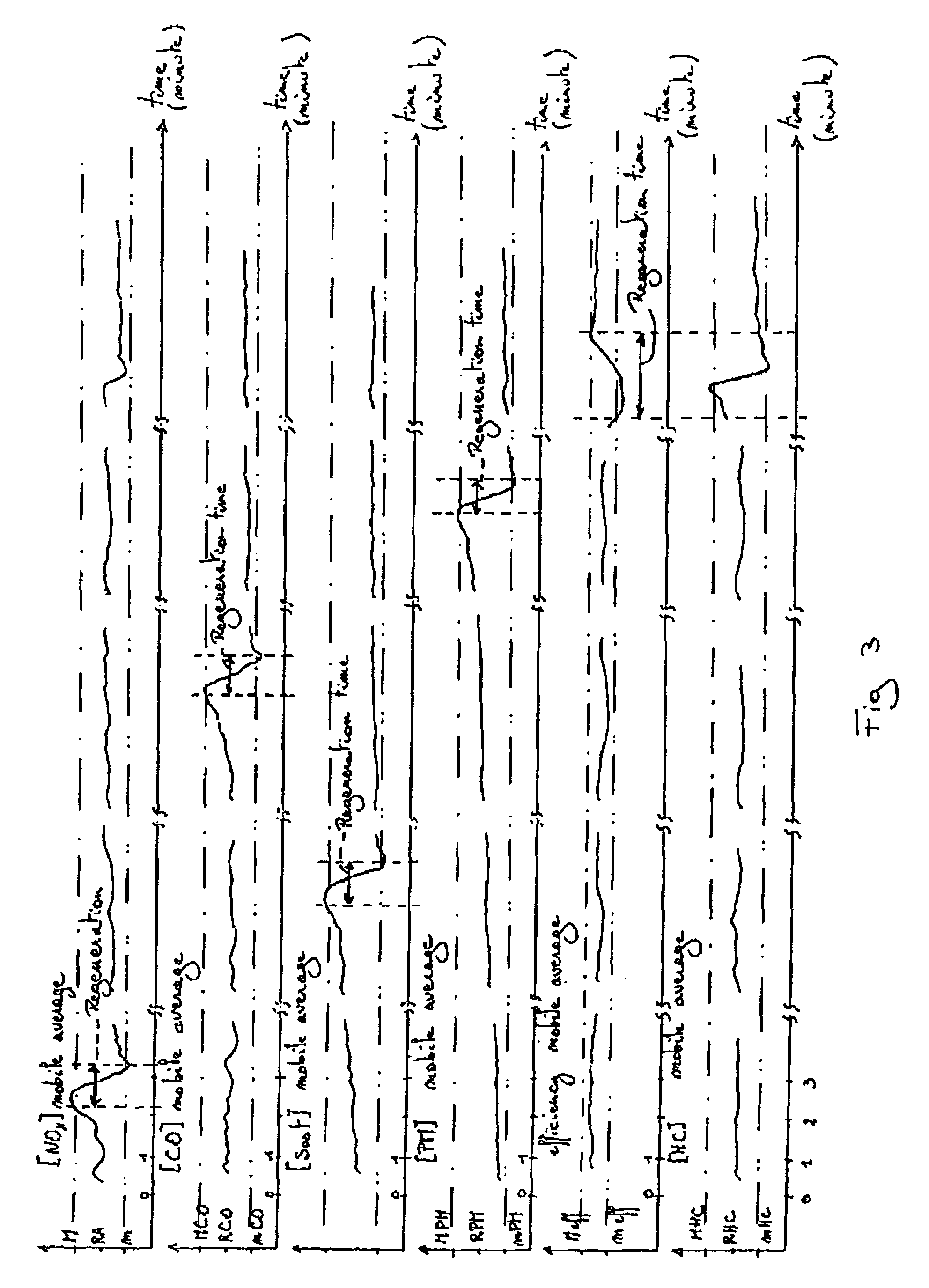Catalytic burning reaction
a burning reaction and catalytic technology, applied in the field of catalytic burning reaction, can solve the problems of reducing the efficiency of the converter, requiring the use of a costly noble metal, and reducing the efficiency of the catalyst, so as to reduce achieve the effect of reducing the weight and reducing the volume of the burning chamber
- Summary
- Abstract
- Description
- Claims
- Application Information
AI Technical Summary
Benefits of technology
Problems solved by technology
Method used
Image
Examples
examples
[0204]The motor of FIG. 1 comprises several chambers 1 in each of which a piston 2 is moved (arrow X). A spark plug 3 is used for the ignition of the mixture air-fuel present in the chamber 1. Valves 4, 5 are actuated so as to allow the inlet of air and combustible in the chamber 2, the outlet of flue gases out of the chamber 2, as well as a possible flushing effect (the inlet valve or valves and the outlet valve or valves being in open position, whereby enabling air to cool the chamber and to remove some still present flue gases) as well as a cooling effect of the flue gases. The motor comprises also: an intake manifold 6, an outlet manifold 7, an air filter 8, a pipe 9 with possibly a valve or butterfly 10 for controlling the air or air-fuel consumption, an outlet pipe 11, a filtering system 12A for the flue gases (for example for further oxidizing thereof, for trapping particles, 3-ways catalyst system, etc) and a soot trap system 12B. The engine of FIG. 1 is a four stroke engine...
PUM
| Property | Measurement | Unit |
|---|---|---|
| pressure | aaaaa | aaaaa |
| temperature | aaaaa | aaaaa |
| size | aaaaa | aaaaa |
Abstract
Description
Claims
Application Information
 Login to View More
Login to View More - R&D
- Intellectual Property
- Life Sciences
- Materials
- Tech Scout
- Unparalleled Data Quality
- Higher Quality Content
- 60% Fewer Hallucinations
Browse by: Latest US Patents, China's latest patents, Technical Efficacy Thesaurus, Application Domain, Technology Topic, Popular Technical Reports.
© 2025 PatSnap. All rights reserved.Legal|Privacy policy|Modern Slavery Act Transparency Statement|Sitemap|About US| Contact US: help@patsnap.com



